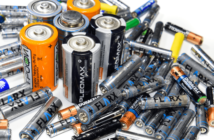Brent Perry is CEO of Ship Insight Journal, a high quality publication covering all aspects of maritime technology and regulation. He wrote a most interesting post about his industry embracing marine electrical power from the perspective of using lithium-ion. The CEO concludes safe operating practices will be fundamental to a successful transition.
Did Ytterøyningen Set Marine Electrical Power Back?

MF Ytterøyningen is a Norwegian ferry that converted to battery power in 2018. On October 10, 2019 the Outer Eye – as the name translates – returned to port after reporting a small fire in the battery room. The fire department stood down after the temperature returned to normal.
However, just after dawn the following day there was a violent explosion in the marine electrical power pack. This caused over $2 million damage to the engine room, while the shock wave dented the fire truck. However, Brent Perry still sees a promising future for lithium-ion electric hybrid vessels. But in this instance the Ytterøyningen was approaching port and could dock and evacuate passengers and crew.
This Would Be a Different Matter Far Out at Sea

We agree with the CEO of Ship Insight Journal that battery safety at sea is paramount. This is in any case standard practice in all aspects of shipping. He believes the key is preventing thermal runaway when lithium batteries short circuit internally, overheat, and emit flammable gases.
Moreover, ship owners should replace batteries before they approach their life end he says, when they are most dangerous. However, some stretch is possible by replacing individual packs, he believes. Brent Perry’s third prerequisite before introducing marine electrical power is integrated battery management systems. These would slow the charging rate as the batteries filled up, and eliminate over-charging.
“As there are safety practices for every power solution, whether it is bunker fuel oil, LNG or methane,” he concludes. “Safe operating practices are fundamental when it comes to marine batteries too.”
Related
Causes of Marine Lithium Battery Fires – EU Update 5
Fires in Marine Lithium Batteries: EU Update 7
Preview Image: Naval Fire Fighting Exercise at Sea




